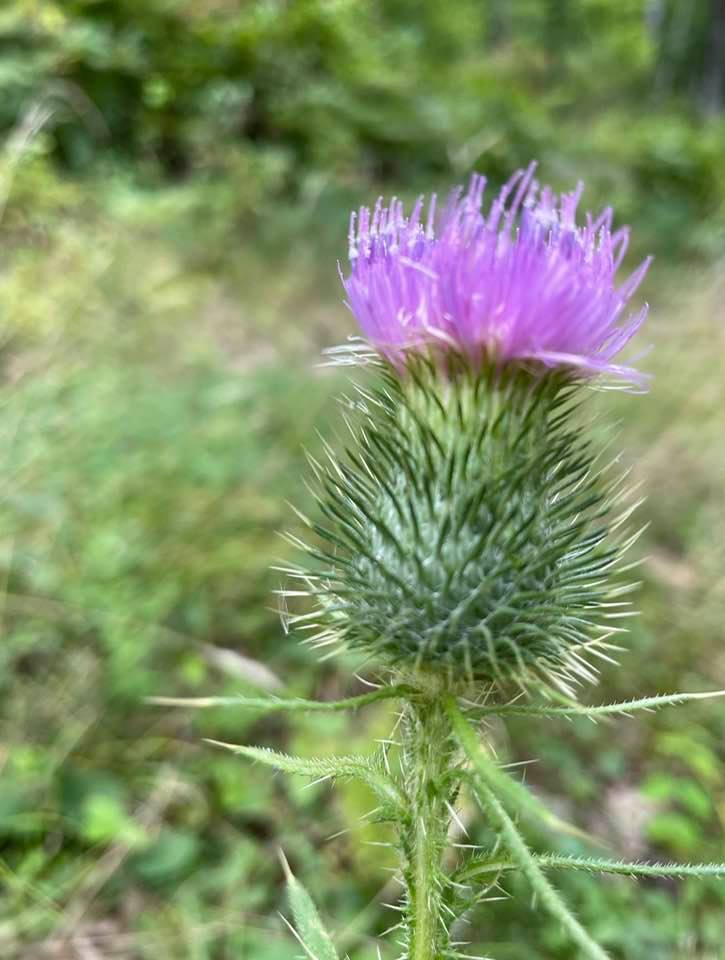SEPTEMBER 13, 2021 – When I hike the trails through my tree garden, I take incremental measures to weed out the prolix, wild raspberry bushes. I love cultivated raspberries and miss the ones that used to grow in our backyard at home. The wild ones, however, are a different animal . . . er, plant. They’re unruly, undisciplined, and obnoxious. Their cause—if they have one—is not advanced by their most undesirable feature: thorns.
On hot days in July I wore shorts on my hikes, and over time, my ankles were gashed and slashed as if by cuffs of . . . razorblades. And though I never venture forth without thick, leather work gloves, occasionally a raspberry thorn will pierce the leather through to my flesh, whereupon I let out a yelp—often in the form of an expletive.
Other thorny plants can be found in the woods. One is a low-lying weed with multiple, spiny leaves. They look like felonious cousins of the dandelion, and I refuse to dignify them by researching their identity. Even with leather gloves, a person would be foolhardy to make physical contact with these weeds. They bristle like fully loaded pin cushions.
All of which bring me to the common thistle, another thorny plant that discourages human contact. I don’t encounter many of these in the tree garden, but this year several appeared along the powerline easement that borders the north side of the garden.
Like the other plants of thorny disposition, the thistle is not a particularly attractive weed. In late July, however, I noticed that several thistles had blossomed. A round, purple flower appeared atop the thistle-head, giving the appearance of a colorful cap. This feature converted bristling thistles into comical characters.
After snapping a photograph of one, I wondered . . . what kind of country (Scotland, for instance), would select the thistle as its national flower and symbol? What sort of place would embrace an anti-social weed that on its best day looks like a comic book personality? Having traveled to Scotland and being a bit Scottish on my mother’s side, my wonderment was somewhat rhetorical. Though Scotland is a beautiful corner of the world, it’s rugged, as is its history, filled with marauding Vikings and conquering English.
With the world at my fingertips, I Googled “Why did Scotland adopt thistle?” In an instant, even in the tree garden surrounded by wilderness, I had my answer.
According to the Internet, the thistle became the emblem of Scotland during the reign of Alexander III, which, in case you forgot, lasted from 1249 to 1286. Hellbent on conquering the Scots, King Håkon of Norway made a night landing near Largs on the Firth of Clyde and planned to ambush the sleeping locals. What the Norsemen failed to take into account, however, was . . . a thistle.
“Ouch!” yelled a Norwegian, ruining the element of surprise.
Having saved Scottish hides by pricking Norwegian skin, the thistle was the hero of the day—and the national emblem forever after.
(Remember to subscribe to this blog and receive notifications of new posts by email.)
© 2021 by Eric Nilsson
